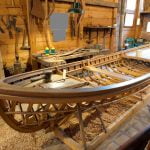Building a workbench for woodworking is an essential step in creating a functional and efficient workspace for any woodworking enthusiast. A well-built workbench provides stability, support, and versatility necessary for various woodworking projects. By constructing your own workbench, you have the opportunity to customize it to fit your specific needs and preferences.
When it comes to building a workbench for woodworking, choosing the right materials is crucial. The type of wood used will greatly impact the durability and strength of the workbench. Additionally, considering design options and functionality will ensure that your workbench is tailored to your individual woodworking needs.
In this article, we will explore the importance of a well-built workbench in woodworking, discuss the benefits of building your own workbench, and provide guidance on choosing the right materials and designing considerations. We will also cover the necessary tools needed for construction, step-by-step instructions for the construction process, adding functionality to your workbench, as well as finishing and protecting your workbench.
Let’s dive in and learn how to create the perfect workbench for all your woodworking projects.
Choosing the Right Materials
When it comes to building a workbench for woodworking, choosing the right materials is crucial to ensure that the workbench is sturdy, durable, and able to withstand the demands of woodworking projects. There are various types of wood that are suitable for building a workbench, each with its own unique characteristics and benefits.
Different Types of Wood
Some popular choices for workbench construction include hardwoods such as oak, maple, and beech. These woods are known for their strength and durability, making them ideal for supporting heavy projects and withstanding the wear and tear of woodworking tools. Softwoods like pine and cedar are also viable options, especially for those on a budget or looking for a lighter workbench.
Durability and Strength
When choosing materials for your workbench, it’s important to prioritize durability and strength. The wood should be able to withstand heavy loads without warping or bowing over time. Additionally, consider the density of the wood as denser woods tend to be more stable and less prone to denting or scratching.
By carefully considering the type of wood used in your workbench construction, you can ensure that the finished product will meet your needs in terms of both functionality and longevity. Ultimately, selecting high-quality materials will contribute to the overall success of your woodworking endeavors.
Design Considerations
When designing a workbench for woodworking, there are several important factors to consider in order to create a functional and efficient workspace. One of the key considerations is the size and height of the workbench. It should be comfortable to work on and accommodate the specific tasks you will be performing. Some woodworkers prefer a taller workbench for hand tool work, while others may need a lower bench for certain power tool operations.
Another crucial design consideration is the type of vise or clamping system to incorporate into the workbench. This will depend on the specific woodworking tasks that will be performed. For example, a front vise is essential for holding boards flat against the bench during hand planing, while a tail vise can be useful for holding long boards or panels for joinery work.
Additionally, when designing a workbench for woodworking, it’s important to think about any additional features or accessories that may enhance its functionality. This could include adding an integrated tool storage system, installing bench dogs or holdfasts for securing workpieces, or incorporating built-in electrical outlets for powering tools.
Overall, taking these design considerations into account when building a workbench for woodworking can result in a customized and highly functional workspace that meets your specific needs as a woodworker. With careful planning and attention to detail, you can create a workbench that not only provides a sturdy and stable surface for woodworking activities but also enhances your overall efficiency and productivity in the workshop.
- Factors to consider when designing a workbench for woodworking
- Customization options based on individual woodworking needs
The Necessary Tools
Building a workbench for woodworking requires the use of essential tools to ensure a sturdy and functional end result. Here are some of the essential tools required for building a workbench:
- Measuring tools: Accurate measurements are crucial when constructing a workbench. Essential measuring tools include a tape measure, combination square, and straight edge.
- Cutting tools: To cut the wood for your workbench, you will need a saw. A circular saw or a table saw is commonly used for this purpose. Additionally, a miter saw may be needed for cutting angles or making precise crosscuts.
- Joinery tools: Joinery is an important aspect of constructing a workbench. Tools such as a chisel, hand plane, and router are commonly used to create strong and secure joints in the wood.
- Assembly tools: Once the pieces of the workbench are cut and jointed together, assembly requires the use of screws, nails, clamps, and wood glue to hold everything in place.
When using power tools during construction, it is important to prioritize safety. Always wear appropriate safety gear such as goggles and ear protection. Additionally, carefully read and follow the manufacturer’s instructions for each power tool to minimize any risks associated with their use while building your workbench.
Step-by-Step Construction Process
Building a workbench for woodworking can be a rewarding and satisfying project. It allows you to customize the workbench to fit your specific needs, ensuring that it provides the right support and functionality for your woodworking projects. Here are some detailed instructions for constructing a basic yet sturdy workbench:
- Begin by cutting the wood to the appropriate dimensions according to your desired workbench size. This will involve cutting the legs, frame pieces, and tabletop surface.
- Assemble the frame of the workbench using wood screws or joinery techniques such as mortise and tenon joints or dovetail joints for added strength.
- Attach the legs to the frame using wood glue and screws, ensuring that they are securely fastened.
- Next, attach the tabletop surface to the frame using screws, making sure it is level and flush with the frame.
- Once the basic structure is assembled, you can add additional supports or bracing for added stability if needed.
- Finally, sand down any rough edges and surfaces to ensure a smooth finish that won’t snag your workpieces.
By following these step-by-step instructions and taking your time with each stage of construction, you can create a durable and functional workbench that will serve as a valuable tool in your woodworking endeavors.
| Workbench Construction Step | Details |
|---|---|
| Cutting Wood | Cut wood to appropriate dimensions for desired bench size. |
| Frame Assembly | Assemble frame using screws or joinery techniques. |
| Leg Attachment | Attach legs securely with wood glue and screws. |
| Tabletop Attachment | Attach tabletop surface ensuring it is level with frame. |
Adding Functionality
When building a workbench for woodworking, it’s essential to consider adding functionality to the design. This will help make your workbench more versatile and convenient for completing various woodworking projects. Two key aspects to focus on when adding functionality to your workbench are incorporating storage options and adding clamps and vices for securing workpieces.
Incorporating Storage Options
One important consideration when designing your workbench is including storage options that can help keep your tools and materials organized and easily accessible. This can be achieved by adding drawers, shelves, or cabinets underneath the workbench surface. These storage options can provide a designated space for storing hand tools, power tools, measuring instruments, and other woodworking essentials. By having these items within reach, you can streamline your workflow and minimize disruptions during the woodworking process.
Adding Clamps and Vices
In addition to storage options, incorporating clamps and vices into the design of your workbench is crucial for securing workpieces while performing various woodworking tasks such as sawing, sanding, or chiseling. Having integrated clamps and vices allows you to firmly hold down the material you are working on, ensuring stability and precision throughout the project. This also provides added safety by preventing pieces from moving unexpectedly during cutting or shaping processes.
By thoughtfully considering these functional elements when building a workbench for woodworking, you can create a workspace that not only supports your craftsmanship but also enhances efficiency and organization in your woodworking endeavors.
Finishing and Protecting Your Workbench
Staining or sealing your workbench is an essential step in the construction process. Not only does this protect the wood from moisture and wear, but it also enhances the overall aesthetic of the workbench.
When choosing a stain or sealant, it’s important to consider the type of wood you used for your workbench as different woods may require different types of finishes. For example, softer woods like pine may benefit from a pre-stain conditioner to ensure an even finish, while hardwoods like oak may require a different type of sealant for optimal protection.
Maintenance tips are also crucial to keeping your workbench in top condition for years to come. Regular cleaning and inspections can help prevent any potential issues such as warping or cracking. Additionally, using coasters or pads under heavy tools or machinery can prevent dents and scratches on the workbench surface. It’s also important to periodically reapply a protective finish to maintain its durability and appearance over time.
One way to add functionality to your workbench is by incorporating storage options into the design. This can include shelves, drawers, or even built-in tool racks to keep your workspace organized and clutter-free. Adding clamps and vices for securing workpieces is also essential for woodworking projects. These additions not only enhance the versatility of your workbench but also contribute to a safer and more efficient woodworking experience.
| Finishing Tips | Maintenance Tips |
|---|---|
| Choose the right stain/sealant based on wood type | Regular cleaning and inspections |
| Consider pre-stain conditioning for softer woods | Use coasters/pads under heavy tools |
| Follow manufacturer guidelines for application | Periodically reapply protective finish |
Conclusion and Next Steps
In conclusion, a well-built workbench is a crucial element for any woodworking enthusiast. Not only does it provide a sturdy foundation for working on various projects, but it also offers customization options to suit individual needs. By choosing the right materials and considering design factors, woodworkers can create a workbench that meets their specific requirements and preferences.
Building a workbench for woodworking can be a rewarding and fulfilling project. The process of selecting the materials, designing the bench, and constructing it with the necessary tools provides an opportunity to hone one’s woodworking skills while creating a functional and practical workspace. Additionally, adding functionality such as storage options and clamps enhances the utility of the workbench, making it an indispensable piece of equipment in any workshop.
If you have been contemplating building a workbench for woodworking, now is the perfect time to start. Armed with the valuable information provided in this article, you have all the guidance needed to embark on your own workbench building project.
Whether you are a seasoned woodworker or just starting out, the satisfaction of crafting your own workbench tailored to your specific needs will undoubtedly elevate your woodworking experience. So gather your tools, select your materials, and begin this exciting journey of creating a fundamental tool that will enhance your woodworking endeavors for years to come.

Hi everyone! I’m a woodworker and blogger, and this is my woodworking blog. In my blog, I share tips and tricks for woodworkers of all skill levels, as well as project ideas that you can try yourself.





